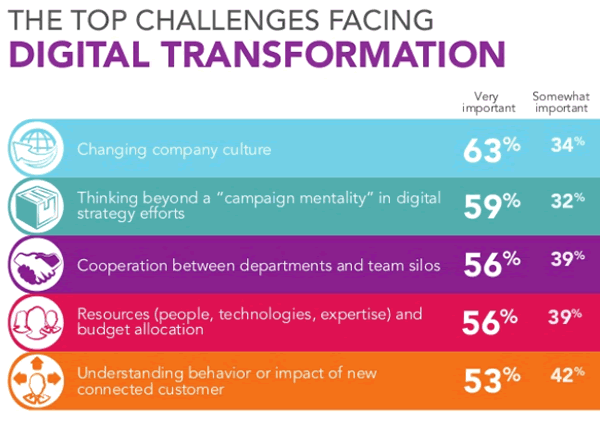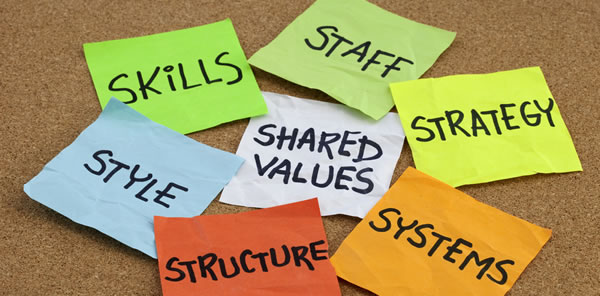Is there such a thing as an enterprise or corporate culture? An organizational culture? A digital culture? A collaborative culture?
Anthropologists and sociologists will often say “no”. However, we all know that what we call the overall culture of an organization is more than a fluffy term and does exist, regardless of how we call it. A look at organizational culture, mainly from a business aspect (enterprise culture, collaboration culture, etc.) and with a focus on the human elements that matter and on today’s digital transformation challenges.
Organizational culture and the ties that bind and connect us
Here is one of the definitions of ‘culture’: the ideas, customs, and social behavior of a particular people or society.
If we look at an organization as a group of people that is connected by something they have in common, being part of the organization to start with, the question is how we can ‘install’ habits and behavior within that organization.
To do this we must recognize that an enterprise is not the same as a society, a tribe or a ‘culture’ in the traditional sense (and of course that not all organizations are businesses). In the end, although there are obviously INDIVIDUAL differences, most people work at a company because they needed a job, like it and – if you hire well – feel OK with the values, offering and ‘atmosphere’ of the company.
However, at the end of the day it still is work and the ties that bind us in work and business can’t be compared with the bonds in a cultural context where the common traits and purpose are very highly, certainly also on the emotional level.
Corporate culture and change: capabilities and behavioral attitudes based upon practice and common purpose
Nowadays you hear a lot about the need to have a customer(-centric) culture, a culture of innovation, a content culture, a culture of change and even a digital culture. The topic of corporate culture is being mentioned more than ever in this day and age of the customer, information and ‘digital’.
What does it all mean and why does it even matter? In essence we are talking about capabilities and competencies, about focal points and about the almost ‘automatic’ reflex to put customers first, be receptive to change and evolutions (and act upon them), think out of the box and value the critical role of content and information.
However, these capabilities and ‘reflexes’ which penetrate everything we do across the organization don’t come just like that and need to be part of your digital transformation strategy.
They require leadership, change management, a common purpose, involvement and putting the competencies into practice so a genuine culture, in the business context, can emerge. Obviously, in essence your core business competencies are human ones, just as in the end your enterprise is composed of people, those that work there now and, in the context of culture, the legacy of founders and people who made the organization what it is, in interaction with other people: your ecosystem.
The thing is that you don’t change people overnight. In fact, you never change them profoundly at all (except when they chose to do so themselves through a long process). What you can change are habits and behavior, certainly in regards to work and business attitudes. What you can change is how you manage. What you can change is the way you hire: looking for people who already have this (business) culture experience and attitude and can inject it into your organization.
When organizational culture holds us back
Why would you look at all that? Why would you try to build (not impose) a specific culture in the business context, with customer-centricity often being a key one? Why would you try to change your own habits and views if you’re a leader?
Because, and let’s ignore the saying that culture eats strategy for breakfast, an unadapted corporate culture holds many organizations back and even stands in the way of digital transformation as Altimeter found (image below) and you can read in our interview with Charlene Li.
However, note that as opposed to Altimeter we look at digital transformation from the enterprise-wide and holistic perspective. For us, digital transformation is also about more than marketing so take the top challenges facing digital transformation below with a grain of salt. The second challenge (thinking beyond a campaign mentaility) for instance is one that is oriented on customer-facing aspects and even marketing (more about digital marketing transformation here) and customer experience optimization (more on CX and transformation here). However, digital transformation stretches beyond that.

Culture is never the beginning but a partial means to a (long-term) end
Does the fact that changing company culture sometimes ranks as a top challenge across various activities mean that we need to start by changing culture? It might sound strange but the answer is no. The first step is always starting with the end goals, the holistic picture of how to get there and the human aspects required in mind.
- If there is a lack of will and/or understanding regarding the challenge to respond to or initiative to take in any level of the organization;
- if there are gaps in the ways to reach the desired goals;
- when you see silos getting in the way due to historical reasons;
- if you find that the focus is not on the creation of value for all stakeholders but on the beautiful corporate self;
- then you start working around “culture” as a way to bring along a shift in mentalities, skillsets, processes, human resources and even part of the organization (including rethinking existing ways of doing things) to reach those goals.
Still, it is all part of starting with the end in mind, that holistic picture of seeing all the parts (processes, technologies and people) and the human aspects we mentioned, with continuous and connected improvement and questioning what we do as part of a never ending journey.
In the end a people-centric culture always wins, whether you call it customer-centric, human or customer-obsessed, with the customer being all stakeholders, including your workers.
All the rest (e.g. digital culture) is part of a broader set of specific requirements which are needed to respond to specific challenges and evolutions. To take the case of a digital culture: it serves as a concept and a way to fill the gaps that organizations need in a reality of digital transformation. But it is not the start nor the end. Just consider this: your customers don’t talk about digital, soon you won’t neither as it will simply become part of business whereby the need for digital transformation de facto will continue to exist amidst many digital possibilities to come but then as (an important) part of the overall business and customer value creation and innovation goals.
Top image: Shutterstock – Copyright: marekuliasz


